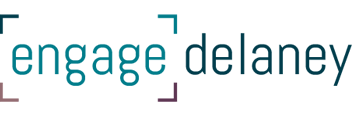Should we access our in-house resources or hire an engagement consultant?
by Kristi Merilees, Director, Engagement and Communications
Increasingly, organizations are recognizing the value of allocating resources to community and stakeholder engagement. Some are learning that under resourcing engagement can introduce project risk. The question then becomes one of how to resource engagement effectively while balancing staff workloads and the project budget. Without the right resources, the engagement process might not meet stakeholder needs or expectations and create frustration both internally and externally.
The work of engaging with community members and stakeholders on a project or initiative typically requires staff to reprioritize their job responsibilities to allocate sufficient resources. Hiring an engagement consultant can have the effect of adding a temporary, highly skilled human resource. This adds specific engagement expertise to a project team without placing a significant burden on employee workplans or daily responsibilities. An outside consultant is accountable for managing clear project timelines and deliverables, which will help to ensure that the engagement process and its schedules are met.
An important consideration when deciding whether or not to seek outside resources relates, in part, to the level of potential controversy with the project. It can be difficult for internal staff to make decisions or take the necessary actions using a neutral approach. Sometimes due to previous experience, staff may enter an engagement process with preconceived ideas of the expected results or stakeholder response. Alternatively, a stakeholder might also have a preconceived notion of a staff person because of a past project. A consultant can be an important resource working as a neutral, third party who is tasked with creating an unbiased process. This can be easier for the engagement consultant to be vested in a fair and neutral process than a project team member. This adds credibility not only to the engagement process but also to the project findings and outcomes.
Here are three tips to get the most return on investment for your engagement consultant:
- Set a clear scope of work and ensure it’s made clear how the engagement timelines intersect and support the project timeline.
- Be clear about internal resources available and how they are to be accessed. If you have design, research, analysis, or other production assets in-house – use them!
- Set some expectations around the desire to learn with the consultant and build staff capacity. Staff often want to do engagement work, but don’t have the chance because they are “stuck” in operations or day-to-day activities that require a staff resource. Having been in-house, I can tell you this can be frustrating. Take a partnership approach and set an expectation around building internal capacity.
The best working relationships are ones where there are no surprises, and everyone knows what they bring to the process and the project.




